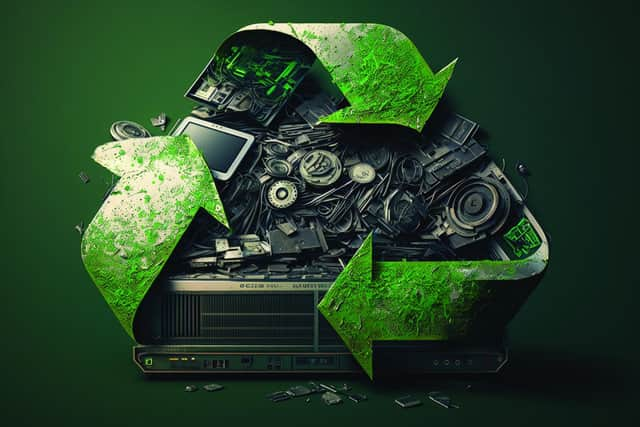Kirsty McLuckie: Your trash could be a treasure for another
But that doesn’t mean a major divestment of unwanted domestic items can’t be just as soul-enhancing as organising your storage or painting an accent wall.
It is almost inevitable that we bring non-biodegradable waste into our homes and, while you can recycle as much as possible, in most households there are plenty of items which are unsuitable for the compost, wouldn’t be welcomed at a charity shop and are too big for the blue or green bins.
Advertisement
Hide AdAdvertisement
Hide AdLeft unchecked, our homes can easily fill up with defunct electrical goods, large pieces of plastic, and stained or ripped fabrics.


I currently need to deal with a pile of canvas and twisted metal on our lawn. Up to three weeks ago it was a stylish and functioning gazebo, before high winds led to its downfall.
In the UK, we aren’t great at ensuring unwanted items get a second chance – only recycling about 45 per cent of our household waste.
We send, on average, 18 million tonnes of waste to landfill each year, which means each person in the UK throws away their own body weight in rubbish every seven weeks. So, taking out anything that can be recycled is imperative.
There are regulations around dropping off your unconsidered trifles, however. Most recycling centres will only allow cars free entry, charging a fee for a van or trailer. It doesn’t help that these centres are out of town, so if you don’t have transport, they are pretty inaccessible.
Some will also limit the number of times you can visit – not great if you’re having a major clear out, or doing DIY with a lot of debris to offload.
And some even require proof that you are a local resident, which seems unnecessarily unwelcoming.
But once in, there is something so satisfying about getting the right thing in the right bin – whether it be judging the difference between small and large electrical items, or identifying the separate areas for matched and unmatched shoes.
Advertisement
Hide AdAdvertisement
Hide AdThe thought that our unwanted items could be returned to their constituent parts and reused somehow also offers the possibility of redemption for our consumerist sins.
And sometimes the evidence of recycling is more immediate.
A couple of years ago, I found a car boot insert in the garage, long after we’d sold the vehicle to which it belonged. This large hard plastic square was molded to fit a specific make of vehicle, and while I did post it online there were no takers.
So to the dump it went, but heaving it to one of the skips on a cold winter’s day, I bumped into two chaps who asked if they could have it, as it was exactly what they were looking for.
Rejoicing over the coincidence of finding someone who must have the same type of car, I handed it over and carried on with my day.
It was only when I was returning home later, and spotted the pair on a nearby snow-covered hill, whizzing down the slope on our boot insert, that I realised what they meant.
But then, as ever, one person’s trash is another’s treasure.
- Kirsty McLuckie is property editor at The Scotsman